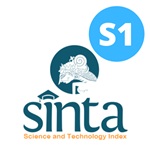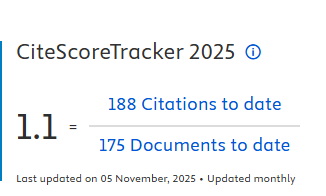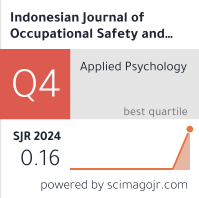Physiological Impacts of Personal Protective Equipment on Health Care Workers
Downloads
Introduction: Since the outbreak of the Ebola virus, its design has constantly been evolving to serve the purpose of protection without hampering the efficiency. In a study conducted in 2019, before the advent of COVID 19, it was found that performing precarious laboratory or clinical works while wearing PPE involved various restrictions compared to the same work without PPE. The objective of this study is to identify the influence of personal protective equipment on physiological parameters and the individual wellbeing of healthy workers. Methods: This Pilot Quasi-experimental study was performed on 12 volunteers fitting the inclusion criteria. Candidates were seated comfortably and their baseline resting pulse rate, respiratory rate, oxygen saturation via pulse oximeter, blood pressure, and End-tidal CO2 were recorded via a portable monitor. All candidates were asked to wear a KN95 mask along with a 3 ply mask over it and wear anti-fog goggles. All the above-mentioned parameters were recorded again after five minutes of comfortable sitting and ten minutes of brisk walk. Result: Significant difference is found between resting EtCO2 and after wearing of PPE (P = 0 .044). After a brief exercise, the further rise in EtCO2 is also significant (P = 0.002). There is no significant rise in pulse after wearing PPE (P = 0.092) but on exertion after wearing PPE, the rise in pulse is statistically significant (P = 0.002). The rest of the variables, such as the rise in respiratory rate, blood pressure, and fall in oxygen saturation rise has no statistical significance. Conclusion: Personal protective equipment has proven to rise in end-tidal carbon dioxide and tachycardia, which can lead to headache, dizziness, and respiratory discomfort. All of the factors can hamper the health care workers' performance and can adversely affect their efficiency.
Keywords: covid-19, end tidal CO2, personal protective equipment, physiological
Akbar-Khanzadeh, F., Bisesi, M. S. and Rivas, R. D. (1995) ‘Comfort of Personal Protective Equipment', Applied Ergonomics, 26(3), pp. 195–198.
Beder, A. et al. (2008) ‘Preliminary Report on Surgical Mask Induced Deoxygenation During Major Surgery', Neurocirugia, 19(2), pp. 121–126.
Center for Disease Control and Prevention (2020) Guidance for the Selection and Use of Personal Protective Equipment (PPE) in Healthcare Settings, USA: Department of Health & Human Services.
Daigle, P. et al. (2020) ‘Personal Protective Equipment (PPE) during the COVID-19 Pandemic for Oculofacial Plastic and Orbital Surgery', Orbit. Taylor & Francis, 18(Juni), pp. 1–6.
Garibaldi, B. T. et al. (2019) ‘A Novel Personal Protective Equipment Coverall was Rated Higher than Standard Ebola Virus Personal Protective Equipment in Terms of Comfort, Mobility and Perception of Safety when Tested by Health Care Workers in Liberia and in a United States Biocontainm', American Journal of Infection Control. Elsevier Inc., 47(3), pp. 298–304.
Honda, H. and Iwata, K. (2016) ‘Personal Protective Equipment and Improving Compliance among Healthcare Workers in High-Risk Settings', Current Opinion in Infectious Diseases, 29(4), pp. 400–406.
Mahmood, S. U. et al. (2020) ‘Strategies for Rational Use of Personal Protective Equipment (PPE) among Healthcare Providers During the COVID-19 Crisis', Cureus, 12(5), pp. 1–8.
Malik, T. (2020) ‘COVID-19 and the Efficacy of Different Types of Respiratory Protective Equipment Used by Health Care Providers in a Health Care Setting', Cureus, 12(4), pp. 1–3.
O'Brien, C. et al. (2011) ‘Methods of Evaluating Protective Clothing Relative to Heat and Cold Stress: Thermal Manikin, Biomedical Modeling, and Human Testing', Journal of Occupational and Environmental Hygiene, 8(10), p. 588–599.
Patel, S. et al. (2020) Physiology, Carbon Dioxide Retention. Treasure Island: StatPearls Publishing.
Roberge, R. J. et al. (2010) ‘Physiological Impact of the N95 Filtering Facepiece Respirator on Healthcare Workers', Respiratory Care, 55(5), pp. 569–577.
Yánez Benítez, C. et al. (2020) ‘Impact of Personal Protective Equipment on Surgical Performance During the COVID-19 Pandemic', World Journal of Surgery, 44(9), pp. 2842–2847.

In order to be accepted and published by The Indonesian Journal of Occupational Safety and Health, Author(s) who submit an article should complete all the review process. The copyright of received articles assigned to the The Indonesian Journal of Occupational Safety and Health and Department of Safety and Health, Universitas Airlangga as publishers of the journal. The intended copyright includes the rights to publish articles in various forms (including reprints).
The Editorial Team of The Indonesian Journal Of Occupational Safety and Health and Department of Safety and Health strive to ensure that no errors occur in the articles that have been published, both data errors and statements in the article.
Users of this website will be licensed to use materials from this website following the Creative Commons Attribution-NonCommercial-ShareAlike 4.0 International License. No fees charged. Please use the materials accordingly.
------------------------------------------------------------------------------------------------------------------------------------------------------------------------------------------
Attribution ” You must give appropriate credit, provide a link to the license, and indicate if changes were made. You may do so in any reasonable manner, but not in any way that suggests the licensor endorses you or your use.
NonCommercial ” You may not use the material for commercial purposes.
ShareAlike ” If you remix, transform, or build upon the material, you must distribute your contributions under the same license as the original.







 How to Submit Articles in OJS
How to Submit Articles in OJS

























